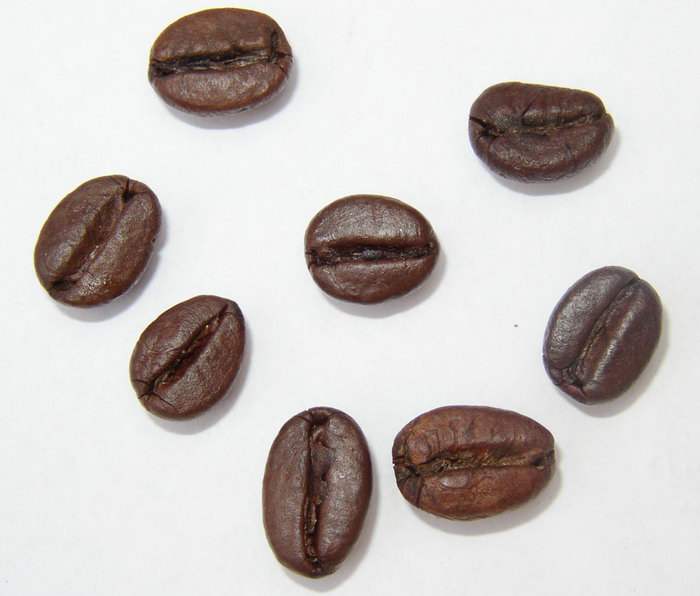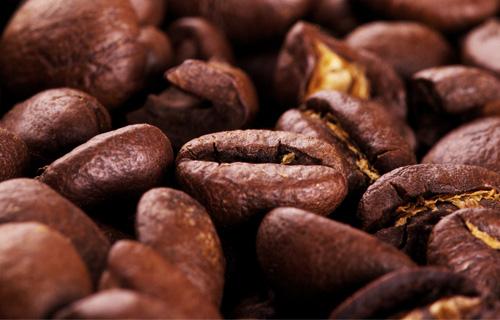The taste of Peruvian coffee. Is Peruvian coffee good?
Follow the caf é (Wechat official account vdailycom) and found that Beautiful Cafe opened a small shop of its own.
Peruvian coffee beans are best known for their coffee beans from Chimacha Mayou in the middle and Cusco in the south. In addition, some areas in northern Peru also produce characteristic organic coffee. Organic coffee is made of beans grown in the shade of trees. Although the yield of coffee beans is not high because of the method of planting in the shade, its quality can reach the level of gourmet coffee. This is because shading trees can slow down the ripening of coffee trees, help coffee grow fully, make it contain more natural ingredients, breed better flavors, and reduce caffeine content.

Peruvian coffee is grown in a planned way, which has greatly increased coffee production. Its rich acidity and mellow smoothness are its most prominent features. Peruvian coffee has a soft sour taste, medium texture, good taste and aroma, and is an indispensable ingredient in the production of comprehensive coffee. High-quality Peruvian coffee, with strong aroma, smooth, layered, rich sweet, elegant and mild sour taste, will quietly awaken your taste buds.
Peruvian coffee market:
The private Peruvian Coffee exporters Association (ComeradeExportadoresdeCafedelPeru) has been established, which is committed to improving the quality of coffee. Its primary task is to set standards and eliminate inferior products, so as to create an atmosphere of quality supremacy. This positive move heralds a bright future for the coffee industry. Since then, rising prices have encouraged farmers to actively grow coffee rather than cocoa, the region's traditional cash crop.
The high quality coffee produced by Peru is shipped to Germany for blending and then to Japan and the United States, which also illustrates its high standard of quality.
[related reading]
Peru, a mysterious country bordered by Ecuador and Colombia to the north, Brazil and Bolivia to the east and Chile to the south, is the main body of the ancient Inca empire.
The Inca Empire (Quechua: Tawantin Suyu or Tahuantinsuyo) was an ancient empire in the Americas from the 11th to 16th centuries. The political, military, and cultural center of the empire was located in Cusco, Peru today. The center of gravity of the Inca empire is located in the Andes in South America, and its territory is about Peru, Ecuador, Colombia, Bolivia, Chile and Argentina in present-day South America. The Inca, the main body of the nation, is also the founder of the Inca civilization, one of the three major civilizations in the Americas.
The ancestors of the Incas lived in the highlands of Peru and later migrated to Cusco to establish the Kingdom of Cusco, which developed into an Inca empire in 1438. From 1438 to 1533, the Inca Empire used various methods, from military conquest to peaceful assimilation, so that the territory of the Inca Empire covered almost the whole western South America. The power of the empire reached its peak during the reign of the monarch Wainakapak. In 1526, Spanish colonist Francisco Pizarro discovered the Inca Empire. In 1529, a civil war for the throne broke out in the Inca Empire, which weakened. In 1533, Pizarro invaded the Inca Empire and designed to kill Atahualpa, the last monarch of the Empire. The Inca Empire perished and became a colony of the Spanish Empire.
Peru has a dry plateau climate running through the Andes in the west and Amazon plains in the east, with a tropical climate. The intersection of the two major landforms and climate creates a rich micro-climate with a large temperature difference between day and night. Peru and Colombia are both inherently excellent coffee paradises.
Coffee fields in the Peruvian mountains have no running water or electricity, and poor Indians have been organically cultivated since ancient times and still cannot afford to buy pesticides and fertilizers. Because of the low production cost, the price is lower than that of Mexico and Ethiopia, two organic coffee producers.
Peruvian coffee fields are mainly distributed in Cacamaca in the north, Cusco and Puno in the south, and more than 60% of coffee varieties are ancient Tibica.
What is organic coffee?
Coffee-producing countries use a large number of chemical fertilizers and pesticides to inhibit diseases and insect pests and increase production, but these chemicals destroy the natural nutrients of the soil, seep into groundwater and even pollute rivers. In most producing countries, inorganic cultivation of chemical fertilizers is adopted, and varieties that do not need shade and can withstand exposure, such as Kaddura, Kaduai, and Katiwen, are similar to encouraging farmers to cut down forests and take land, and the damage to nature's ecology is hard to measure!
Organic coffee: instead of chemical fertilizer and medicine, use organic fertilizer, kitchen waste, or livestock manure, and use the ancient shade cultivation, which is the favorite planting method of ancient Tibica and bourbon, but the yield of beans per hectare is only a few hundred kilograms. It is far lower than several tons of inorganic cultivation, so the production cost of organic coffee is higher.
Important Notice :
前街咖啡 FrontStreet Coffee has moved to new addredd:
FrontStreet Coffee Address: 315,Donghua East Road,GuangZhou
Tel:020 38364473
- Prev

Peruvian coffee varieties, Peruvian coffee introduction
Following Cafe Review (Wechat official account vdailycom) found that the Beautiful Cafe opened a small shop of its own in Peru: coffee is high-quality and balanced and can be used for mixed drinks. Up to 98% of Peruvian coffee is grown in forest areas, and most producers are small farmers. Peru's finest coffee is produced in Chanchmayo, Cuzco, Norte and Puno (P
- Next

Cuban Crystal Mountain Coffee, introduction of Cuban Crystal Mountain Coffee beans
Following Cafe Review (Wechat official account vdailycom) found that Crystal Mountain Coffee opened a small shop of its own. Crystal Mountain Coffee is a coffee from the Crystal Mountain of Cuba and is synonymous with Cuba's top coffee. Crystal Mountain Coffee comes from the Crystal Mountain of Cuba, so it is called Cuban Crystal Mountain Coffee. Crystal Mountain Coffee is synonymous with top Cuban coffee, because in this area, in addition to growing coffee,
Related
- Detailed explanation of Jadeite planting Land in Panamanian Jadeite Manor introduction to the grading system of Jadeite competitive bidding, Red bid, Green bid and Rose Summer
- Story of Coffee planting in Brenka region of Costa Rica Stonehenge Manor anaerobic heavy honey treatment of flavor mouth
- What's on the barrel of Blue Mountain Coffee beans?
- Can American coffee also pull flowers? How to use hot American style to pull out a good-looking pattern?
- Can you make a cold extract with coffee beans? What is the right proportion for cold-extracted coffee formula?
- Indonesian PWN Gold Mandrine Coffee Origin Features Flavor How to Chong? Mandolin coffee is American.
- A brief introduction to the flavor characteristics of Brazilian yellow bourbon coffee beans
- What is the effect of different water quality on the flavor of cold-extracted coffee? What kind of water is best for brewing coffee?
- Why do you think of Rose Summer whenever you mention Panamanian coffee?
- Introduction to the characteristics of authentic blue mountain coffee bean producing areas? What is the CIB Coffee Authority in Jamaica?

